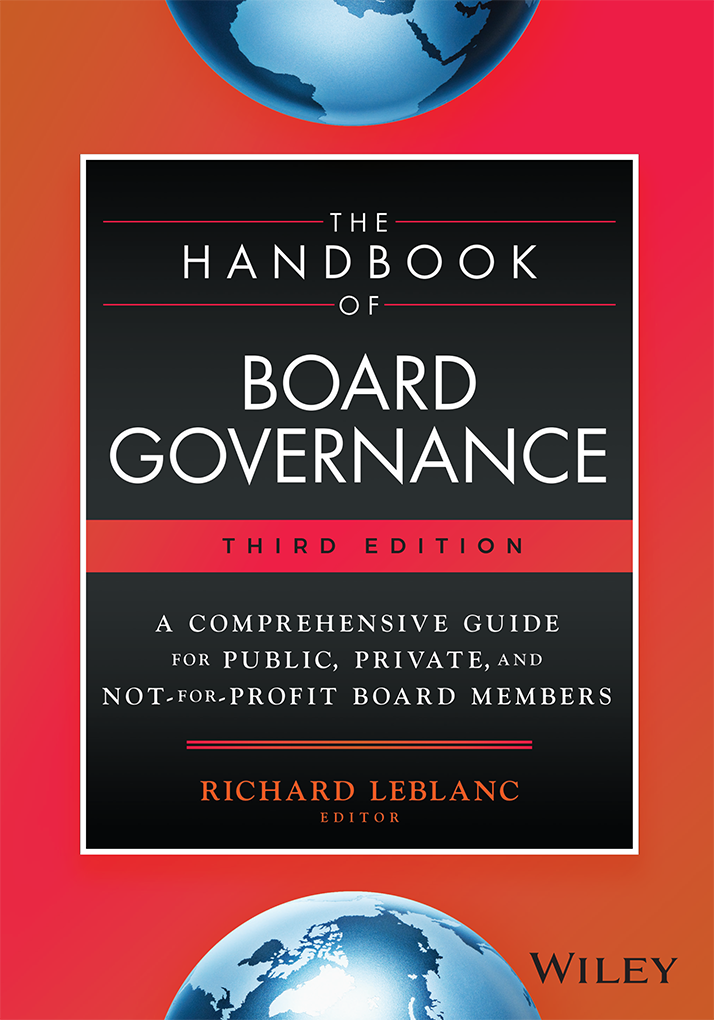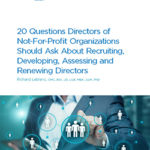There have been a number of activist situations in Canada recently, including CP, Agrium, Telus, BlackBerry, Tim Hortons and others. Is your board a siting duck or otherwise vulnerable? Here is what the red flags are for defective governance, below.
Methodology
The following reflects, in no particular order: (i) my work in advising regulators (e.g., OSFI, OSC, AGCO, FiCom, others) in respect of governance; (ii) interviews with 40 activists, private equity leaders, members of the NACD 100, and top 100 CEO listing in 2013; (iii) my advisory work in two activist situations above (both advising the activist in the first, and board under attack in the second); (iv) my work with governance enhancements in companies that have been accused of fraud, bribery, corruption, stock manipulation and otherwise (ten in total); and (v) my advising and assessing award-winning boards (nine in total), who have strengthened their governance. The data collection has included individual director interviews and observing the board in action. For the full paper, published in the International Journal of Disclosure and Governance, November 2013, Special Issue: Enhancing the Effectiveness of the 21st Century Board of Directors: Part II, edited by myself, please contact me and I will email it to you.
Governance red flags, for activist attack and board bulletproofing, especially board composition, leadership, value creation and compensation, include the following, in no particular order
1. Captured, owned directors (trips, gifts, friends, company office, interlocks, school together, jobs for kids, donations, Directors economically dependent on fees): not objectively independent and/or owned in the boardroom, and Board refuses to have heightened independence standards or address the foregoing;
2. Directors with reputational, adverse publicity, integrity, independence, other board performance, egregious action or failure baggage, or inadequate experience and track record, and Board does not cure the distraction or adverse inference (i.e., promptly remove the Director);
3. No or little industry (market / geography, customer, supply chain) expertise on Board, and Board incapable of providing strategic control and direction to Management;
4. Legacy, pedigree, over-boarded (>2), over-tenured (>9 years), or otherwise ‘zombie’ Directors without new blood, diversity and renewal. Evidence is: busy boards with busy directors (>2 boards) “consistent and convincing” worse long-term performance and oversight (Stanford researchers); >9 years directorship reduces firm value (“board tenure has an inverted U-shape relation firm value” – Huang, July 2013); and gamed majority voting returns ‘zombie’ director to board. Global regulatory director tenure converging on 9-10 years (UK, India, Australia, Hong Kong, Singapore, other). Management-beholden, cozy, over-tenured, or legacy service providers (law, audit, compensation): no renewal or freedom to be adverse: regulators now addressing;
5. Management who unduly influence independent oversight functions (internal audit, chief risk officer, chief compliance officer, chief actuary, or equivalents) or external assurance advisors (external audit, governance lawyer, compensation consultant, search firm) from Board or Committee oversight, by preselecting, starving or otherwise unduly influencing. Regulators are becoming clear these functions are to be independent of senior and operational Management, and accountable to the Board and/or relevant Committee directly;
6. Weak, legacy, not independent, not effective, or unskilled Chair (Board or Committee): specifically, a Chair owned by Management or a dominant Shareholder, or both, or who does not understand obligations, capital markets, lacks leadership, credibility, cannot implement strict management accountability standards, and lacks subject matter or industry expertise; A Chair who should not be Chair, in other words;
7. A Board Chair who cannot lead value creation: An activist Board does the following:
- Board, led by Chair, sets standards for vigorous value creation process, establishes ambitious value creation criteria, and leads Management to develop optimal value creation plan;
- Deep dives and due diligence by all Directors into company, business model, industry and markets to understand value drivers, innovation opportunities and associated risks;
- Board approves plan and its milestones, monitors progress regularly, calling for prompt corrective action to ensure goals are met, including increased goals as new unplanned/unanticipated opportunities arise;
- Value maximization plan clearly and simply spells out key timelines, milestones, targets, and individuals accountable for each key plan component and specific results;
- Reporting format and information flow provides frequent, timely and accurate information to Board on plan progress and any variances;
- Board addresses plan variances quickly and directly: Management provides concrete responses on how shortfall will be corrected, by whom and when;
- Chair adopts a primary role in foregoing;
- Maintenance of ‘day to day’ management by CEO and rest of executive team;
- Highly engaged level of functioning by Board and a shift in primary focus towards value creation; and
- Robust debate and review of plan execution is primary board meeting agenda item; and at least one presentation each board meeting from key personnel below the senior level, on that particular individual’s role in the value maximization plan and a full discussion of progress to date in that regard.
9. CEO and other management information/personnel funneling, channel blocking, and starving of the Board; a weak Chair who does not cure; buy-in to “nose in fingers out” drinking of the Kool-Aid promulgated by Management and even director associations (see item 8 above), without an activist Director who can move the room;
10. Lack of executive/in camera sessions without any Management (including General Counsel / Corporate Secretary) in the room (i.e., executive sessions of and with: the Board; each Committee; each independent oversight function (see item 6); each external assurance provider (item 6); and key Shareholders, without Management);
11. Lack of regular meetings with Directors and major long-term Shareholders, and Board Chair directing counsel not to interfere; and failure of Board to understand/appreciate, or be misinformed about, shareholder base, and their concerns, behaviors, styles and preferences, including dissident activity by insurgents and activists: no early warning system or rapid response, experienced fight team, and being caught flat-footed;
12. Not listening to, or acting upon, advisory, precatory or withhold proposals, resolutions, votes, the will of shareholders, or listening to advisors, or having conflicted advisors, and curing the underlying issue(s) promptly;
13. Lack of value creation plan, with focus on innovation or strategy by the Board, or a separate board Committee if the Board cannot or will not (see item 8 above for what this looks like);
14. Lack of confidence in Directors by investors: A board incapable or unwilling to direct, control or replace underperforming, ineffective or inefficient Management;
15. An arrogant, insulated, bloated, complacent, non-introspective, defensive, clubby or otherwise inexperienced board that is in denial, not in charge, has lost objectivity, is not credible, does not have a sense of urgency, cannot be relied upon, and/or has become entrenched;
16. A governance analysis by a Board that is not at least equal to that of the activist, who bases theirs on public (not inside) information;
17. Directors who are ‘paid for showing up’ (per meeting, per committee, flat fee, etc., or excessively paid) without incentive link from their pay (cash and equity) to individual performance and/or achieving company value creation hurdles; and spending Directors’ own money on stock, vs. being awarded stock for attendance (current);
18. Boilerplate, inadequate, complex or gamed disclosure;
19. Failure to appreciate the sophistication, resources, screening, homework, PR, signaling, persuasive ability, staying power and resolve of an activist to go the distance;
20. A Board allowing Management to become emotional and attack the activist, rather than focus on the value creation plan, the issue(s), and communicating this to Shareholders to win support, or compromise, or resolve with the activist (as the case may be);
21. A Board itself becoming defensive to reasonable governance enhancements or significant reform: going dark, lawyering up, engaging in window dressing, di minimis action, and/or siding with Management at the expense of the Company and Shareholders (as the case may be), thinking the issue will go away; or acting in the best interests of company as pretext for perceived self interest;
22. Entrenchment: Non reasonable pills, staggered, dual, super, restrictions, thresholds, advance notice, bylaws, etc., devised by incumbent Management counsel, approved by Board, and perceived to hide, block or frustrate fluid market for corporate control and/or director removal;
23. Advocacy and funding of trade associations, advisors, lobbyists to resist governance reform (using Shareholder money by self-serving Management is the view of some activists);
24. Inadequate attention to validating (and on occasion misrepresenting) each Director’s expertise: in other words, linking the strategy and value creation plan of the Company to each Director’s separate competencies;
25. Not countering the expertise and track record of each incumbent Director on the Management slate vs. each prospective Director on the dissident slate, removing any weak Director on Management slate where necessary: in other words, not countering the activist two part concerns that: (i) change is necessary, and (ii) the activist Director slate can more effectively address the change;
26. Management hubris, herding, empire building, going beyond pure play, poor capital deployment or cash oversight, asset or supply chain mismanagement, deficient operating, financial or strategic performance, or running out of options, and Board not owing the best ideas for unlocking of shareholder value before the activist does, with the Board being perceived as “enthusiastic amateurs” (large institutional shareholder CEO, from interviews);
27. Over-reliance on inflated peers and hyper benchmarking, (salary-disguised, non stretch bonuses, LTIP not performance-based (PSUs)), and 17% of CEO pay unrelated to performance rather than structural result of year-over-year above-median peer group pay (Elson and Ferrere, August 2012);
28. Excessive compensation equity to management: mixed relationship to performance, tendency to manipulate, and a Board moving goalposts;
29. Lack of proper independent governance treatment and disclosure of waste, conflicts of interest, related party transactions, complex structures, use of corporate opportunity, and extraction of Shareholder money to founder, family or insider, and sleepy Board;
30. Lack of integration of academic research: Recent disclosure in reference to 1994 Dey guidelines: “We did virtually no research.”; and
31. Board or retained management advisors that subscribes to the myth, or do not confront the evidence, that hedge fund interventions do not create long term positive operating performance and value for all shareholders, when systemic study shows they do (Bebchuk, July, 2013: analysis of 2000 interventions over 1994-2007 studied @ 5 year periods).
Richard W. Leblanc, PhD












